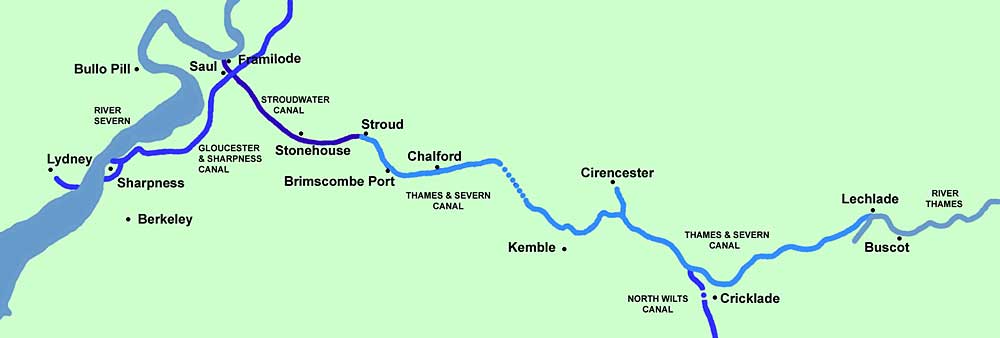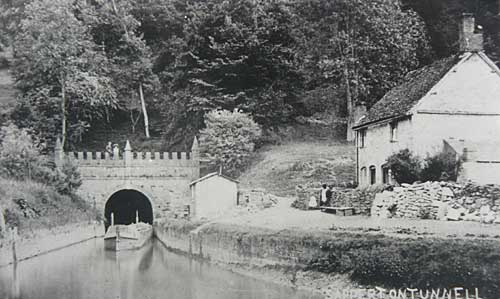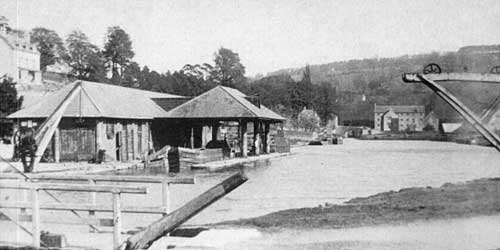A brief historical overview of the Canal, highlighting its main features and cargoes handled.

The Thames & Severn Canal was opened in 1789, running for 29 miles between the Stroudwater Canal at Wallbridge and the River Thames at Inglesham near Lechlade, with a short branch to Cirencester. It was built to serve mills in the upper Stroud valley and to complete an inland waterways route between London and the West Midlands and Bristol. The opening of the North Wilts Canal in 1819, provided an alternative route to Abingdon for narrowboats, avoiding the difficult upper reaches of the Thames.
The route of the canal involved a steep climb up the edge of the Cotswolds, a long summit level including a tunnel, and a gradual descent to the River Thames. Water for using the locks could be drawn from the River Frome (to the west) and the River Churn (to the east), mainly on Sundays when the mills were not working, and a steam pump was installed to raise water to the summit level, but problems with leakage into the porous rock caused difficulties.


Sapperton Tunnel through the top of the Cotswolds was built two miles 300 yards long with no towing path, and vessels were 'legged' through by two men lying on a board and walking along the side of the tunnel.
The size of most locks was chosen to suit the 'western' barges then using the upper reaches of the Thames, which were longer and narrower than the barges using the Stroudwater Canal. To provide for transshipment, two basins were formed at Brimscombe where the valley was wide enough, and the locks to the west were built to the Stroudwater standard. As transshipment was expensive, a special design of barge evolved that could pass through both sets of locks, and the canal was also used by narrowboats which could pass through all of the waterways between the Midlands and London.
Most bridges over the canal were of the traditional hump-backed style built with bricks. There were milestones with cast-iron plates every half mile. The Canal Company built houses for their employees, five being of note as they were round houses.


In the early days, Brimscombe was a very busy place, with barges from Bristol or the Midlands exchanging cargoes with barges heading for London or places on the way. To facilitate the interchange, a secure area between the two basins was available for the deposit of coal, and warehouses provided temporary storage for the many small consignments of general cargoes. However, the opening of more direct canals soon took away much of the long distance traffic, and the use of smaller vessels reduced the need for transshipment.
By the mid nineteenth century, most vessel movements involved delivering bulk cargoes to places in the valley up to Chalford, with only a small proportion continuing over the summit to Cirencester, Lechlade and the upper Thames valley. As the remaining trade was reduced further by competition from the railways, it became increasingly difficult to finance adequate maintenance, and after a long decline, most of the canal was abandoned in 1927 leaving the western end up to Chalford to struggle on until 1933.
For the changing relationship between the Stroudwater and Thames & Severn Companies, read Working with the Thames & Severn Canal Co.